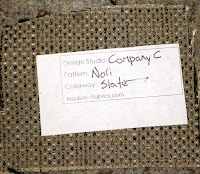The Challenge
I'd spent some time searching online for the perfect bookshelf, one
that was not only sleek, modern, and clean in design, but also had
those just-right dimensions. Well, I did finally find such a bookcase
(see below) that met the design requirement, but lacked the dimensions
and all-wood constitution (it was wood veneer). And since I fancy myself a bit of a
craftsman wannabe, I decided to take upon the challenge of replicating it for much cheaper, using real wood.
- (4) 1.5-inch-thick, 60-inch-long, 11.5-inch-wide wood planks/beams
- (15) 1.5-inch-thick, 15.6-inch-long, 11.5-inch-wide wood planks
- (12) 3/4-inch-round, 13.5 in threaded rods
- Drill and appropriate bits
- Wood finish
- Electric sander and sandpaper
- Wood glue (carpenter's glue)
- 12 Metal T-brackets
The Dimensions
60W x 11.5D x 84H inches
The Schematic
Before any construction took place, I created the schematic (see below) so that we would have something to follow. It's always good to have a diagram of some sort.
 |
| Bookcase Schematic - click to enlarge Note: The schematic calls for (12) 3/4-inch-round, 18 in threaded rods. However, we now recommend (12) 3/4-inch-round, 13.5 in threaded rods. |
The Construction
Initial Goal
The goal was to build the bookshelf by having 6 threaded rods travel from top to bottom inside the vertical supports to ensure stability.
Augmented Plan
Because of our wood selection, using 2-by-8s rather then plywood, we soon realized that we had to deviate quite a bit from our initial construction goal in order to support the bookcase. Rather than use the 6 long rods, we had to use 12 shorter rods, wooden pegs, wood glue, and T-brackets both to support and reinforce construction.
Our Steps

The Results
The New Look
Originally, when we built the bookcase, I had intended to stain the bookcase. At that time, we had carpet on the floor, so the stain would have worked nicely. We've since installed a beautiful hardwood floor that just blends so wonderfully with the natural color of the bookcase, as you can see for yourself in the picture below.
Because of our wood selection, using 2-by-8s rather then plywood, we soon realized that we had to deviate quite a bit from our initial construction goal in order to support the bookcase. Rather than use the 6 long rods, we had to use 12 shorter rods, wooden pegs, wood glue, and T-brackets both to support and reinforce construction.
Our Steps
- We went to local hardware store and had the wood pieces cut to size, according to the dimensions specified above in the Materials section.
- We center-drilled a 3/4-in round hole, 6-in deep in the top of three of 15.6-inch-long vertical planks.
- We threaded a 13.5-inch-long rod into each of the first three vertical planks.
- We followed that by drilling three 3/4-in round holes (about 13in. apart) in each of the 4 horizontal planks.
- We assembled the first shelf by threading the rod in each of the first three vertical planks into the appropriate hole in the first horizontal plank and reinforced with wood glue. Once assembled; this left three exposed, vertical threaded rods that would be used to attach the second row of vertical planks (see photos below).
- We took six more vertical planks and center-drilled a 3/4-in round hole, 6-in deep in both the top and bottom. Then threaded a 13.5-inch-long rod only into the top, as we'd done in step 3.
- We threaded the bottom of three of those six vertical planks into the exposed rods from the first row we assembled and reinforced with wood glue.
- We threaded the second horizontal plank in place, matching the three holes in it with the three exposed rods from the second set of vertical planks.
- We could and would now attach the third row of vertical planks and follow that with the attachment of the third horizontal plank. Keep in mind that we are still reinforcing with wood glue.
- We would assemble the forth row of verticals and forth horizontal plank in a similar manner, leaving all the final three vertical planks to attach.
- For the final three verticals, we center-drilled the hole in the bottom of each and threaded each into the final three exposed, vertical rods, reinforcing with wood glue.
- We attached t-brackets to each joint (12 total) in the back of the bookshelf for even more reinforcement.
- We sealed any joint gaps with wood finish and applied sanding where needed.
- Stain and varnish to your liking. Note: We decided to leave our shelving in its natural state.
It's said that "a picture can say a thousand words," so I'll let the construction unfold through the gallery of images (click on images to enlarge).

The Results
So, without further ado, here's the semi-finished product:
 |
| Semi-finished Bookcase (without stain) - click to enlarge |
The New Look
Originally, when we built the bookcase, I had intended to stain the bookcase. At that time, we had carpet on the floor, so the stain would have worked nicely. We've since installed a beautiful hardwood floor that just blends so wonderfully with the natural color of the bookcase, as you can see for yourself in the picture below.
Natural Bookcase with Hardwood Floors - click to enlarge



















